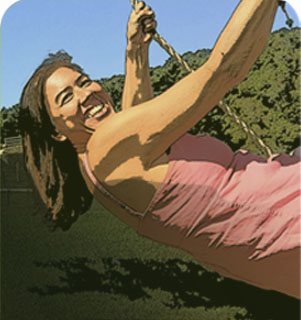Compensations Are Good??!

Pop! In the Tetons last summer, I was teaching a yoga class and felt my bicipital tendon snap. At first I thought it was just the fascial sheath, and since I have an old injury there, I knew “what to do”. But I didn’t.
Instead I forced myself to get into a particular way of doing things, rigidly holding myself to a standard and way of doing things, even in “relaxing” and “staying in the pain-free” range. Nowhere did I accept the compensations I was making, I was too much in fear of the patterns that were creeping back into my system from over a decade of chronic pain in my 30’s.
Yet compensations are a natural adaptation to any system. From compensation we can learn, become more aware and even transform. It is the balance of this adaptation and moving in and out of it that I was forgetting.
In the world of human movement, there is the basic idea of our skeleton and how it moves: around a 3 dimensional axis. We move linearly in side to side (saggital), front to back (frontal), and in a rotational (transverse) plane. In the most common movement example, walking, all 3 planes must occur to move efficiently and well.
We are bombarded with stimulus throughout our day ranging from the normal bump in the sidewalk to out right being knocked off our feet resulting in broken bones. Any or all of these situations result in compensations.
To “recover” our systems, it is important to recognize that we have a skeletal, 3-D pattern and to glean awareness of this linear patterning.
Yet to heal, we must also understand that in addition to the linear pattern, there is a space between the skeleton and biomechanical alignment that requires of us a type of experimentation and play, not unlike that of the child, where learning and flowing occur.
In a way, this is not unlike music. When I study biomechanics, neurophysiology and Iyengar yoga, I am aware of a template, the sheet music of my body. When I move into the Kripalu method of yoga and Vipassana, I become aware of the fluidity of my nature. And when I use the Feldenkrais method, I become aware of how different pieces of my body, the jaw, the eyes, the inner workings of my spine create the flow and space between the notes of the music. Altogether, I get a sense of the magic of my body, the magic of another’s body, the magic of all our bodies moving and their compensations.
Which carries back to the main “THING”: compensations are not bad. Most people want to correct alignment right away, getting rid of a gift of possible awareness immediately of how they are doing something in favor of how you “must” be doing something. When in actuality, compensations are a message, a way of becoming aware, a guide. In reality, true flexibility and strength comes from our ability to move in and out of a yoga pose, an emotional situation or injury with acceptance and ease. To do so, we must accept first, even move with the compensation first before we can move into change. By doing so, we learn how to adapt and be compassionate to ourselves and those around us.
In rehabbing the labral tear of my shoulder, the tear was also a tear, tears of acceptance and acknowledgement for where I was. I am learning, always learning about moving with what I can do, and bringing that into my yoga classes… for how else can others learn if I don’t do this myself?
May you learn to accept all your compensations, and flow into the natural grace and alignment of all of you who are, all of who you are meant to be.
Namaste.
